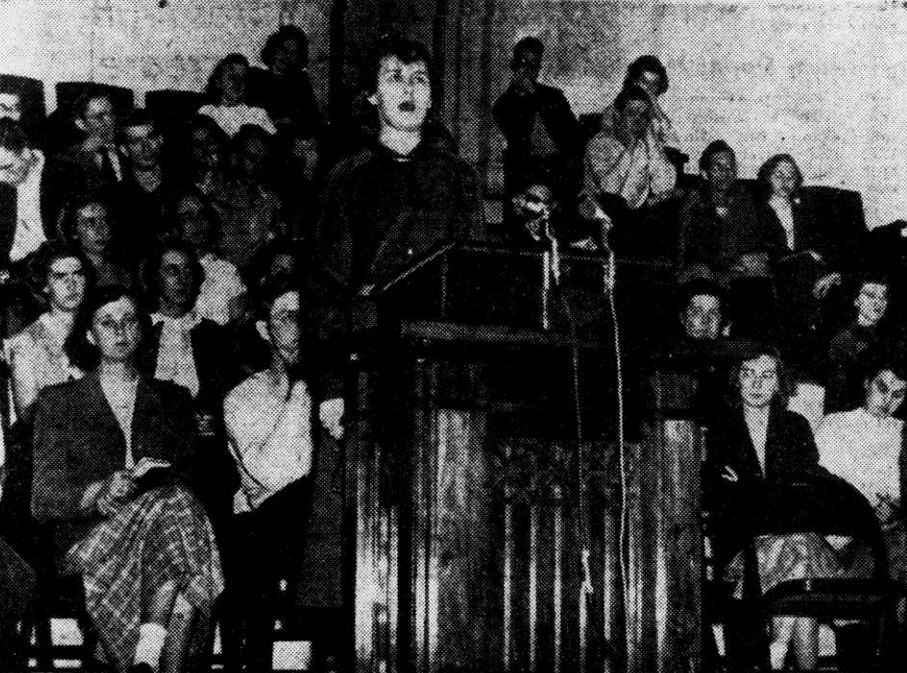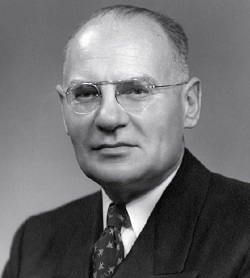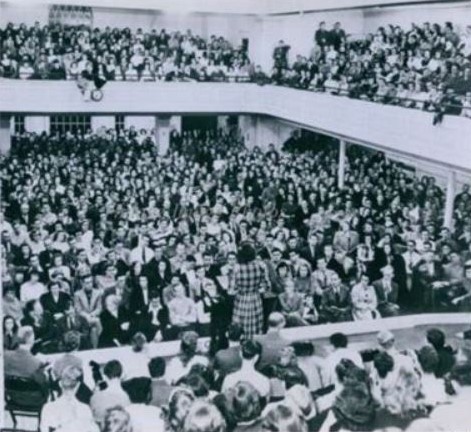1936 & 1943 Wheaton College Revivals


Background of Wheaton College’s Revivals
Beginning from Wheaton College’s founding in 1860, they have experienced numerous periods of revival. Between 1878 and 1895 there were at least ten different reports of revival involving weekly student prayer meetings, special days of prayer and fasting, and the need for specific times for confession.
By the 1930s, the college’s tradition was to hold “special” or “evangelistic” services prior to the beginning of each semester. These meetings were to secure the salvation of any unconverted student who had recently enrolled in the college.
Read of other revivals at Wheaton:
► 1950 Wheaton College Revival
► 1995 Wheaton College Revival
1936 Wheaton Revival
During the fall semester in 1935, a campus leader and several others had a burden for revival on the Wheaton campus. This led them to start praying for their desire to materialize.
In January 1936, during a visit by the renowned evangelist and revival historian J. Edwin Orr, one of those on this prayer team informed Orr of their prayer commitment, and also asked when they should expect revival to come to the campus. In response, Orr replied:
Whenever Christians get right with God about their sins.
1936 Mid-Winter Evangelistic Services
In preparation for the upcoming evangelistic services, the students had “poured their hearts out in prayer,” exercising faith in the time commitment they were making in prayer.
The services were evidently not experiencing the outpouring as the students and others had anticipated, and it led Dr. Wallace Emerson, the dean of men at the school, to stand and say that:
He could not understand what was hindering the work of the Spirit—perhaps there was unconfessed sin.
This led senior Don Hillis, campus leader and pastor of the local Gospel Tabernacle Church, to rise to his feet and speak to those assembled.
Greatly respected by the student body, Don electrified the congregation when he then proceeded to publicly confess sin in his life. Soon another student rose and asked forgiveness.
This led to a series of confessions, with classes being cancelled that day. People even skipped lunch to stay in the building as the confessions continued to pour out.
After supper, they reassembled at 7:00 P.M., when they started again with the testimonies and confessions, continuing till the early morning hours.
Results of the 1936 Revival
► The old, familiar hardness of spirit was replaced with a tender humility.
► Many apologies were exchanged, and many restitutions made.
► This went on for days. It was a different campus.
► Faculty members were also making apologies.
► Attendance at student prayer meetings rose dramatically.
► The number of volunteers for Christian service projects and activities increased.
► The classes of 1934-1937 produced a higher percentage of full-time Christian workers than any other period in Wheaton’s history.

Student sharing during the 1950 Wheaton College Revival at Pierce Memorial Chapel
1943 Wheaton Revival
Extraordinary Prayer
Prior to the 1943 mid-winter evangelistic services, which lasted one week, the students had already made a commitment to prayer, meeting in small groups in various locations.
One young man documented what he witnessed and experienced while passing through a hallway, as he heard the “quiet murmurs” coming from inside one of these prayer rooms:
There were five or six students on their knees, praying—praying.
No campus leaders, these.
There was nothing holier-than-thou—nothing judgmental.
But I can still feel the incredible warmth of that room, the special something that drew me inside.

President of Wheaton College
Dr. Victor Edman
Tuesday, February 9, 1943
The president of the college, V. Raymond Edman, called for a suspension of classes on Tuesday, February 9, so faculty and students could commit to time in prayer.
Thursday, February 11, 1943
The speaker for the daily morning and evening services of that week’s special evangelistic meetings was Flint, Michigan, pastor, Rev. Harold P. Warren. This pastor recorded what he witnessed on Thursday morning of that week, which appeared to be what launched the movement among the students:
I will always remember that Thurs. morning in the chapel, after my message, I gave the invitation for students to get right with God. At that moment a young man, a prominent athlete, came running down the center aisle and up on the platform and asked if he might say what was on his heart to the students.
That student was the captain of the cross-country team, who “with penitent spirit and voice” confessed several sins publicly. The result of his confession spread to others.
MANY of the students were standing at their own seats, greatly moved and weeping, and were waiting to confess their own sins and ask forgiveness.
What followed next was similar to what occurred during the 1936 revival, with confessions continuing throughout the day, as classes were skipped, along with lunch.
The confessions were suspended temporarily in the evening as Pastor Warren shared from the Word of God, but they resumed following, and continued till midnight—President Edman bringing them to a conclusion at that time so the students could rest.

This image shows a student sharing during the 1950 revival at Wheaton.
Friday Morning Faculty Revival
On Friday morning, after Pastor Warren finished sharing, he said:
I rejoice to see what is taking place among these students, BUT I wonder if there is a similar spiritual need among the faculty?
Warren then shared what he witnessed after uttering those words:
It seemed the Holy Spirit came down upon that group of men and women and broke THEM up—one after another they stood, greatly moved with tears and broken voice, they acknowledged THEIR own need for forgiveness and a closer walk with the Lord.
The testimonies and confessions then continued till midnight. On Sunday the services were concluded with “an unforgettable praise service.”
Results of the 1943 Revival
► The entire campus–students and faculty were deeply impacted by this revival.
► The cleansing and renewing of the Holy Spirit was universally experienced.
► There was a renewed commitment to prayer and for living a disciplined Siprit-filled life.
► More than 30 percent of the class of 1943 became involved in some type of full-time Christian ministry.
Source
► Accounts of a Campus Revival by Timothy Beougher and Lyle Dorsett
Return to List of Revival Stories
Chet & Phyllis Swearingen:
Office: (260) 920-8248
romans1015@outlook.com
Beautiful Feet
P.O. Box 915
Auburn, IN 46706

